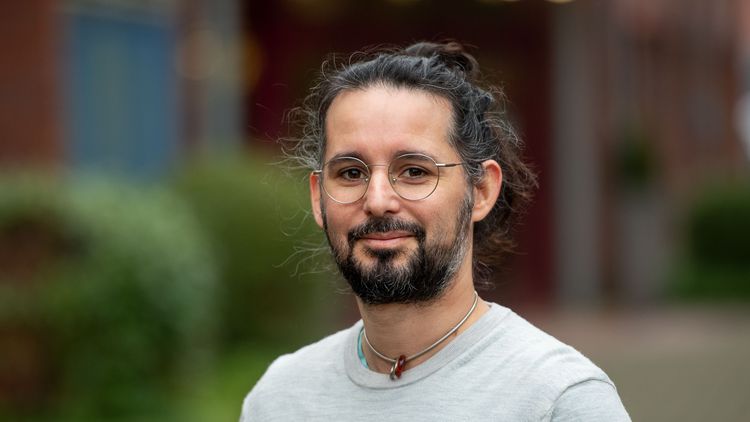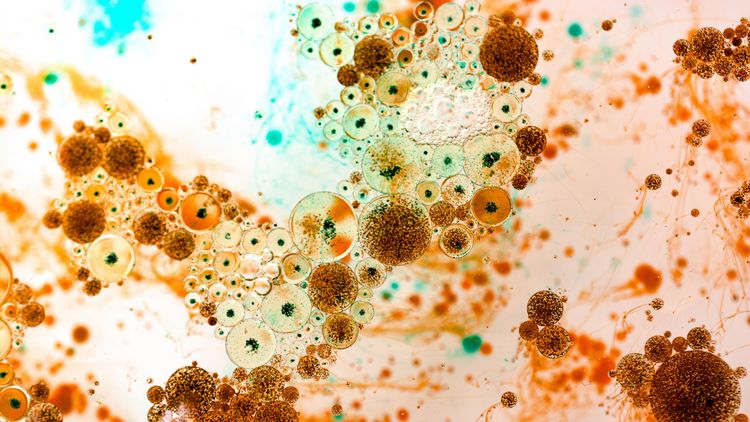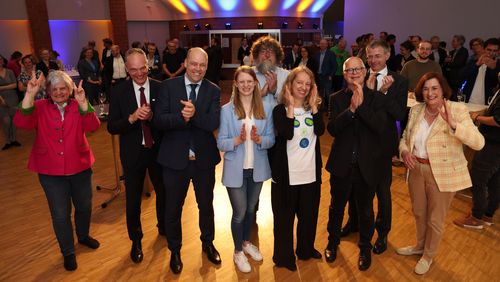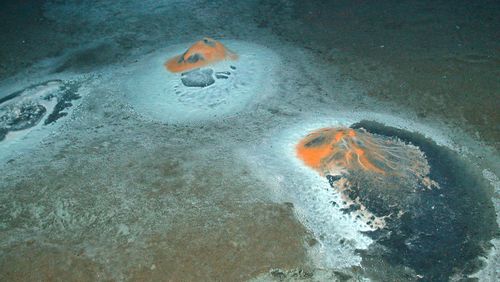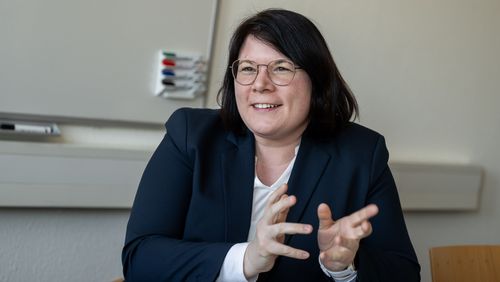Computer scientist A. Murat Eren, who goes by Meren, is convinced that microbiology can contribute to solving many global challenges. In this interview, he talks about the astonishing progress the discipline has made in recent decades.
Microbes have a bad reputation. They are seen as unhygienic and as a primary cause of diseases. Is their image as a band of bad actors justified?
No, not at all! In fact, they are the architects of life: microbes produce much of the oxygen we breathe, help plants grow, synthesize for us chemical compounds we cannot synthesize ourselves, and then break them down to bring these limited resources back into the circulation of life and prevent our ecosystems from falling apart – despite all our efforts. You could call them the wardens of planetary health.
You recently wrote a review article for the journal Cell, which is celebrating its 50th anniversary with the current issue. How has our view on microbial communities changed in recent decades?
Thanks to technological advances, microbiology has been able to expand its focus from individual organisms in cultures to complex communities of microbes in natural habitats. This has revealed a once unimaginable richness and dynamism. These communities occupy all ecosystems on earth that span from marine and terrestrial systems to living hosts. The paper, which I co-authored with my colleague Jillian Banfield from the University of California, Berkeley, argues that the field of microbiology is emerging as one of the most important branches of science. The new era of microbiology has already demonstrated that microbes are our best bet to address our most pressing problems through advances in biotechnology and biomedicine.
How can microbiology contribute to solving big problems?
There are some extremely low-hanging fruits. For instance, recent work focusing on environmental microbes and their genetic repertoire have given us enzymes that help us effectively ‘edit’ human or plant genomes to increase resilience or ameliorate genetic disorders, new and more effective antibiotics and antifungal therapies, and means to breakdown plastic. However, there is more to discover. But unlocking the true genetic potential of microbes that run our planet requires us to change our mindset from educational best practices to science funding. For instance, in our review we emphasize that it is necessary to apply the new, data-driven methods of microbiology to entire ecosystems, embracing the complexity of nature, and being open to unexpected discoveries. Only then will it be possible to tackle questions of utmost importance, such as: How do we store more carbon in soil? How do we cut methane emissions from rice paddies or cattle? How can we accelerate the breakdown of ocean plastic, reduce the salinisation of agricultural soils and use the earth's subsurface to store carbon dioxide? For questions of this magnitude, harnessing natural events may contribute more to improve our understanding than controlled, small-scale experiments. As we mention in our review, sometimes there are reasons to let nature do the experiment.
What characterises the new era of microbiology?
Today, our branch of science is highly data-driven. In order to understand the complexity of natural ecosystems, we need interdisciplinary approaches. I myself am a computer scientist, for example, and I study the ecology and evolution of microbes using bioinformatics methods. Increasing levels of interdisciplinary work in microbiology and the orchestration of the ever-growing set of new molecular and analytical tools helped us drastically expand our understanding of the diversity of life, which forces us to reconsider modesty when considering our place on this planet. The influx of machine learning and artificial intelligence helped us predict three-dimensional structure of proteins, which in turn not only sheds light on evolutionary processes that shape proteins but also facilitates the development of new drugs and biotechnological tools. Overall, it is safe to say that modern microbiology is where people from many backgrounds who span from molecular biologists, computer scientists, ecologists, modellers to chemists, physicists, and others, come together and apply increasingly powerful means to survey and study microbial life to complex natural habitats to find answers to most pressing questions of the 21st century. The new era of microbiology depends on the diversity of its people and tools to shed light on the inconceivable diversity of microbes.
What have been the most exciting discoveries for you recently?
I find it particularly interesting how our view of viruses has changed so rapidly. Viruses have no place in the tree of life, but due to their astronomical numbers and great complexity we recognize today, viruses represent a force of nature that is implicated in all aspects of live, starting from its very origins. Collectively, viruses reprogram the metabolism of their hosts upon infection, influence key ecological processes by preventing or promoting colonization and competition, speed up evolution by tinkering with genomes from all domains of life, and in some cases even change the reproductive behaviour of animals. They force us to think about what a living being is. And just about 30 years ago, giant viruses were discovered, whose genome were larger than that of some bacteria. It has since emerged that these viruses are found everywhere and almost have something like a metabolism. Studies of viruses are flourishing in microbiology, and there is a good reason for that.
Are there other biological structures that are not included in the tree of life?
Yes, plasmids for example. They represent another exciting branch of microbiology. Plasmids are genetic elements that lie outside the chromosomes. They carry additional genes and can be exchanged between different bacterial cells and even between different types of bacteria. Their replication is dependent on their host cells. But they make up for it by providing their hosts with, in some cases, extremely important fitness determinants – for example, genes for antibiotic resistance. However, the diversity of plasmids in the natural habitats is still poorly understood. There are also other genetic elements that lie outside the chromosomes. One group of such elements discovered last year is called "Borgs", after a species from the Star Trek series. Other virus-like elements, whose relationship to other organisms is still completely unclear, were only discovered this year. They have been named “obelisks” because of their cylindrical shape. This opens up completely new worlds, and the contemporary microbiologist is just like a child in a candy shop.
Interview: Ute Kehse

